Photographing Architecture calls for photographers to use Tilt-Shift lenses much of the time, especially for tricky photos. Tilt-Shift lenses (also called TS or PC lenses) correct perspective distortion. This means that they correct the vertical lines of a building so that they actually look vertical, and not slanting towards each other, as happens with a regular lens. In the past, architectural photography may have called for a ‘technical camera’ or a ‘bellows’ attachment, but tilt-shift lenses are easier to use in the field allowing for easier photography.
Sometimes, photographers may use an extremely wide-angle lens, or a special-effect lens to photograph architecture, but these instances are extremely rare because most architectural firms want to see their work the way that it was envisioned. These other, special lenses are mentioned at the end of the article, but their usage is rare.
Architectural Photography is what it sounds like… Taking photographs of the architectural features of buildings. Usually, with commercial architectural photography, these images are for the builders or the building’s owners and are intended to be used in promotional material. Less often, it’s for editorial photography or for historical records.
Why Architecture Photographers Love Tilt-Shift Lenses
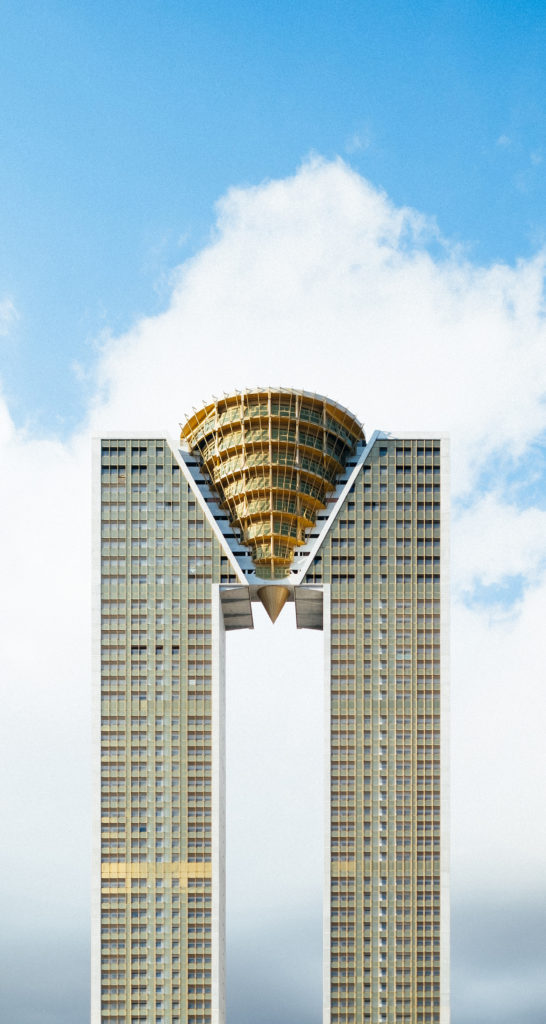
Essentially, the problem with taking pictures of tall buildings from the ground is that as their height increases, the top of the building gets further away from the camera, introducing ‘perspective’ into the photograph.
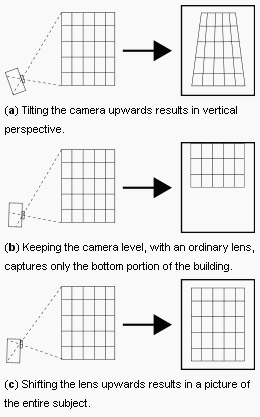
A tilt-shift lens (abbreviated to TS and also called a Perspective Control – PC – lens) enables your camera to operate like it has bellows or like a technical camera, and fixes this perspective distortion. The result is an image with perfectly vertical lines, and that’s how architects like to see their buildings – without any additional distortions added.
TS lenses allow you to keep the lens’ axis parallel to the ground while shifting the view in the required direction. This makes vertical lines appear to be straight. See the image to the right for an explanation.
In short, the TS lens helps by allowing you to keep the camera perfectly level with the horizon but ‘shifting’ the view of the lens upwards… Take a look a the illustration…
Here are some links to interesting photographs taken with Tilt-Shift lenses: Charminar by Sabir, CIS building by fotofacade, and Full Shift Boogie by iso100.
Perspective Control Lenses are truly specialized architectural lenses, and they’re a must-have piece of photographic gear for any professional architectural photographer.
Tilting & Shifting are Two Different Functions of the Lens
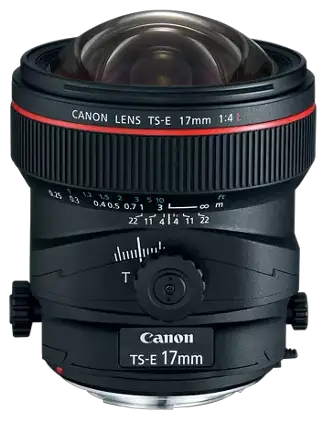
All the tilt-shift lenses mentioned here are manual focus lenses. They allow for very fine control over perspective and focal plane. Tilting and Shifting are two distinct controls that are adjusted by turning the knobs on the lens.
What Does the Tilt Control Do?
The Tilt Control Knob allows you to move the angle of the front group of elements. This changes the plane of focus of the lens – it will no longer be parallel to the plane of focus. The Tilt control can allow for less than the normal depth of field (miniature effect), or to adjust for tilt, to bring even more of the image into focus (used often in tabletop photography or product photography).
What Does the Shift Control Do?
The Shift Control Knob moves the lens parallel to the focal plane. This allows you to a) shift the framing of the shot horizontally or vertically without having to turn the camera (shift-panoramas are possible in this way), and b) correct for perspective distortion when photographing architecture. To correct for perspective, you would rotate the lens so that the shift direction is vertical and then shift the lens up so that the field of view changes to include more of the building.
The Best Tilt-Shift Lenses:
Tilt-Shift Lenses for Canon
Canon makes TS lenses in a wide range of focal lengths. However, it’s the wide-angle lenses that we are most interested in as architectural photographers.
These are the two lenses that are the most relevant for architectural photography.
- Canon TS-E 24mm f/3.5L II Ultra-Wide Tilt-Shift Lens
- Canon TS-E 17mm f/4L UD Aspherical Ultra-Wide Tilt-Shift Lens
Tilt-Shift Lenses for Nikon
As expected, Nikon makes some excellent Tilt-Shift lenses (Nikon calls them ‘perspective control’ PC lenses). Nikon also makes some of the best macro Perspective Control (PC) lenses that are better suited to product or still-life photography – PC-E Micro NIKKOR 45mm f/2.8D ED and PC-E Micro NIKKOR 85mm f/2.8D lenses.
Third-Party Tilt-Shift Lenses (Lenses for Canon, Nikon, and Sony mounts)
Ultra Wide-Angle Lenses – Prime and Zoom

Sometimes the space being photographed needs to be shown in a dramatic fashion. That’s when ultra-wide lenses enter the scene in architectural photography. They’re also used in interior design photography to photograph really small spaces.
These lenses need to be used with care as even slight tilts have a dramatic effect, and the extreme distortion that these lenses have towards the edges can sometimes look unsettling.
Here are three lists of selected Ultra-Wide Prime and Zoom lenses for Canon, Nikon, and Sony cameras. Sigma and Tamron lenses have not been mentioned as they come in either Canon or Nikon mounts; however, here is a list of all Sigma wide-angle lenses and Tamron’s lenses page.
Ultra-Wide Canon Lenses for Architecture
- Canon EF 14mm f/2.8L II USM
- Sigma 14mm f/1.8 DG HSM Art Lens for Canon EF
- Sigma 20mm f/1.4 DG HSM Art Lens for Canon EF
- Canon EF 11-24mm f/4L USM
- Canon RF 14-35mm f/f L IS USM
- Canon RF 15-35mm f/2.8 L IS USM
- Sigma 14-24mm f/2.8 DG HSM Art Lens for Canon EF
Ultra-Wide Nikon Lenses for Architecture
- Nikkor AF 14mm f/2.8D ED
- Nikkor Z 14-24mm f/2.8 S
- Nikkor AF-S NIKKOR 14-24mm f/2.8G ED
- Sigma 14-24mm F2.8 DG HSM Art Lens for Nikon
Ultra-Wide Sony Lenses for Architecture
- Sony FE 12-24mm F2.8 G Master (SEL1224GM)
- Sony FE 12-24mm F4 G (SEL1224G)
- Sony 20mm F1.8 G (SEL20F18G)
- Sigma 14-24 f/2.8 DG DN Art Lens for Sony E
Special-Effects Lenses
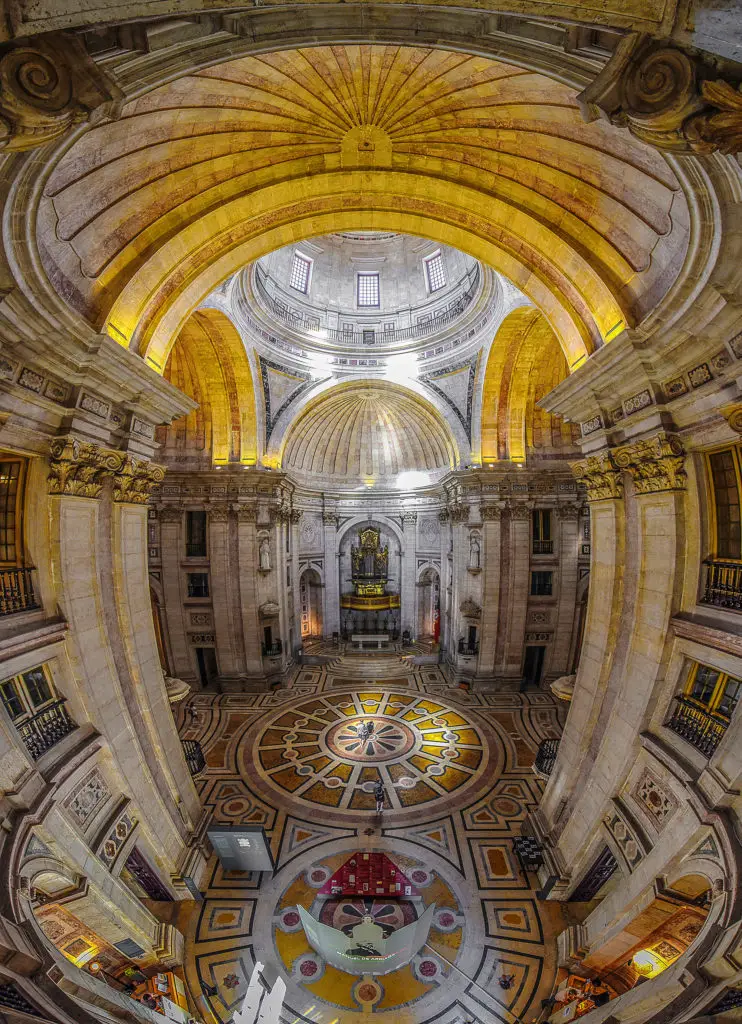
Fisheye Lenses bring a very different view to any photograph.
A fisheye lens has very very limited use in architectural photography, because of the way that it distorts straight lines. They bring in a totally different aspect when it comes to architecture.
It enables the photographer to explore architecture and interiors as patterns and shapes, distorting them – sometimes beyond recognition – so that the viewer is also forced to look at architecture in a new way.
Would you use a fisheye lens for architecture? Weigh in with your comments below.
Here are Some Fisheye Lens Suggestions:
What is Architectural Photography?
Architectural photography is when you take photographs of buildings, arches, or any other architectural structures. They may be interior or exterior photographs. Specifically, the challenge is to portray the architecture in the best possible way and to convey what the architect may have originally envisaged when they designed the structure, often trying to replicate the way the building was drawn on paper, with exact elevations.
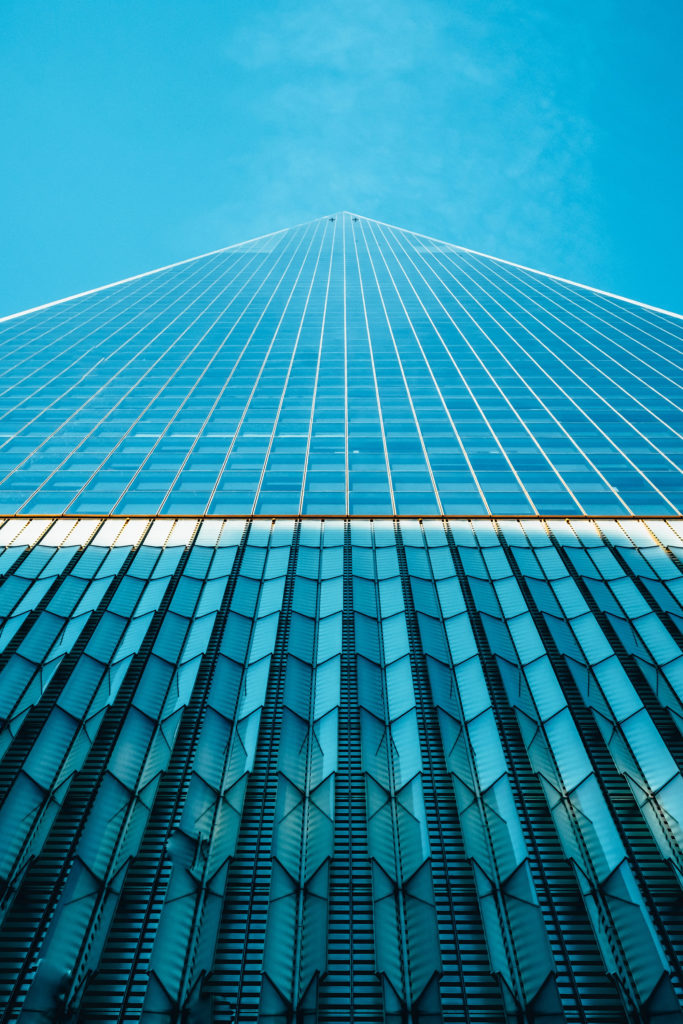
Why is Photographing Architecture Such a Challenge?
The primary challenge is to un-see what we see with our eyes. Our brain tells us that the lines that converge at a point in single, two, or three-point perspective are actually parallel. When we look at a photograph of that same building on paper, it looks very different. It looks like the building is leaning backward.
If we can acknowledge that our brains are ‘fixing’ perspective and allowing us to understand the world regardless of what we see, we can then move on to understanding how to portray these large 3D objects on a small 2D plane.
More Lens Information
These lists are by no means exhaustive. Rather, I intend them as a guide to give you a fair idea of the kinds of lenses that can be used in a challenging profession, to get pictures that bring a viewer back for a second look.
If you’re interested in improving how you look at photography, visit our Photo Projects series.
If you’re interested in reading more about lenses that can be used for different kinds of photography, check out The Lens Resource index post.
Photo Credits: Unsplash, Canon
Help Us To Continue Creating
Get our email newsletter to stay up-to-date with our latest posts. It’s easy to read and is mailed once in 2 weeks.
The easiest way to support Beyond Photo Tips is by using our affiliate links when you buy anything at all. It will never cost you anything extra, and we get a small commission from it, which helps us a LOT! We share our recommended equipment list here.
Some of the links to products on this website are affiliate links, and we only ever link out to gear that we recommend.
You could also show your appreciation by buying us a coffee. Finally, we appreciate you being a part of the community, so do say hi!
NOTE: This article has a number of affiliate links that help to support this website by means of a small commission on sales. Clicking these links for your purchases helps us keep this website going, and does not increase the price you pay for your purchases.

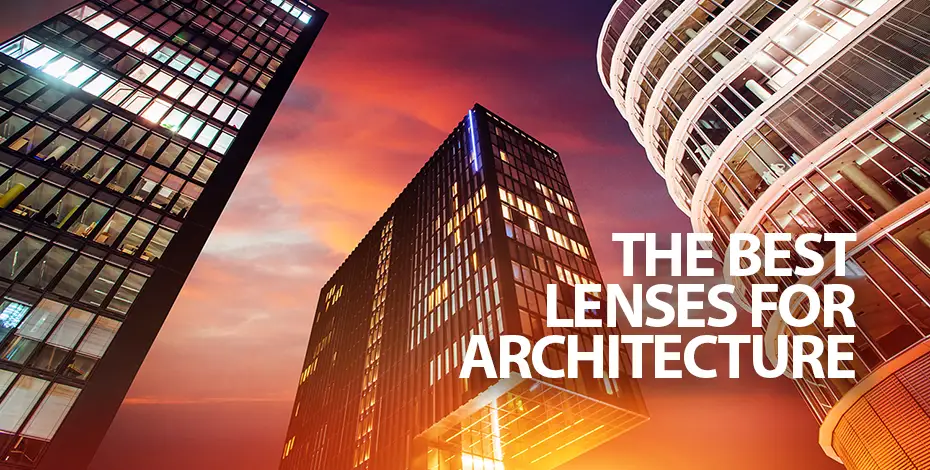




Great write up and great site. I’ll be checking in regularly to read more.
Thanks Jim! Hope to see you here more often.
I am not a photographer… I am a realtor who needs to get better quality photos for my non-professionally shot properties. ( those under $2million)
It is my understanding that a 14mm lense used on a DSLR is equivelent to @ 28mm from my old cannon T70 film body days.
If this is correct, then I feel that I need to use @ 14mm lense for interior shots ( with slave strobes of course) to get the kind of wide shots that no one but the pros seem to be able to get.
Are my assumptions correct?
( our pro says that he uses an “archtectural lense”… but that doesn’t mean much to me….)
thank you, mark
Mark: I think what your pro means by “architectural lenses” are the Perspective correction lenses mentioned above, and possibly the 14mm lens.
Now, if you want to get a true 14mm photograph, you could use a “Full Frame” dSLR such as the Canon EOS 1Ds Mk III or the Canon EOS 5D Mk II. The quality of these cameras is brilliant and a 14mm on one of them is quite amazing.
Do check them out, I’ve also got links to amazon.com from the posts mentioned.
Why is that you guys stop with just Canon and Nikon?
There are other brands and there are people who use those brands as well. Can you not think of lenses for cameras like Olympus, Pentax, Panasonic etc?
Ram
Ram,
Thanks for posting that. Yes, there are quite a few people who use Pentax, Olympus, Panasonic, Sony etc. and yes, I’m sure that these manufacturers have some pretty good lenses. Maybe I should update these articles to include them.
Will look in to it.